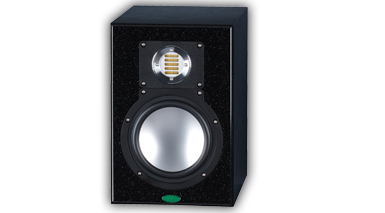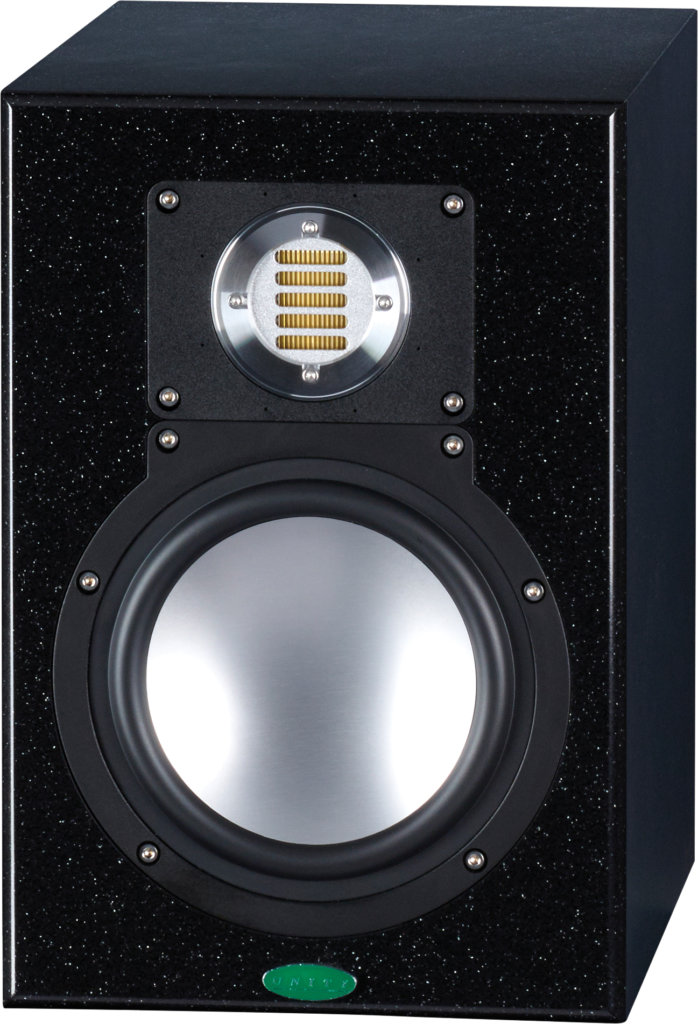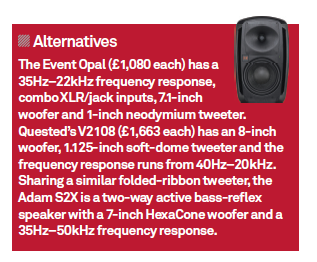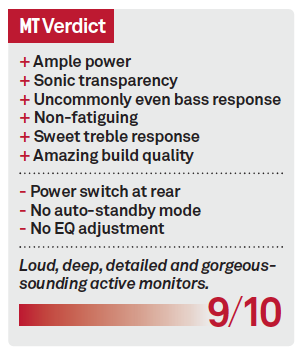Unity Audio Rock Mk II Review
Unity’s Rock won us over on its release, but now a more refined version is here. Huw Price charts the changes. Details Price £2,199/pair Contact – Unity Audio – 01799 520786 Web www.unityaudioproducts.co.uk Amazon.co.uk Widgets Some microphones are undeniably beautiful to behold. The same can occasionally be said for preamps and compressors – […]

Unity’s Rock won us over on its release, but now a more refined version is here. Huw Price charts the changes.



Details
Price £2,199/pair
Contact – Unity Audio – 01799 520786
Web www.unityaudioproducts.co.uk
Some microphones are undeniably beautiful to behold. The same can occasionally be said for preamps and compressors – but never speakers. We are prepared to make an exception for The Rock, though. A rigid speaker baffle is a prerequisite for any quality monitor and Unity Audio has chosen Corian for the job. It’s the stuff used for bespoke work surfaces in über-expensive kitchens and it can be molded with engineering precision.
In this case, the front surface is recessed to accommodate the drive units and the edges are chamfered to minimise diffraction. The Corian has also been polished to a high gloss, and the slate-grey with white flecks closely resembles granite. The logo is a metal badge with green enamel in-fill and the cabinet is made from 12mm Baltic ply rather than industry-standard MDF, while a bracing system has been developed to minimise flexing. The design of the cabinet and baffle is the work of studio designer and acoustician Kevin Van Green.

Pedigree Amps
Unity Audio sought expert guidance for the design of the onboard amplifiers from the legendary Tim De Paravicini. His worldwide reputation spans hi-fi and pro audio and his design for The Rock is a 100-watt, discrete, bi-polar amplifier with low feedback, custom-wound transformers, dedicated low- and high-frequency sections, and overload/clip protection.
The Rock was first introduced a couple of years ago, so we’re reviewing the new MkII version. Developing a product like this is more about fine tweaks and refinement than redesign. While working on the three-way Boulder, Unity achieved significant bass extension by altering the feedback loop of the LF amplifier.
Since the same amp is used in The Rock, it was logical to carry this over and the sound is claimed to be “even more dynamic” as a result. Bass response is now given as 33Hz at the -3dB point instead of 50Hz and, since it’s a sealed cabinet, the roll-off is a gentle 12dB per octave. This also increased LF amplifier output by 3dB, so the HF amplifier was readjusted accordingly (Unity offers an upgrade option for Mk1 owners).
German driver manufacturer ELAC has been around for decades and enjoys a good reputation – The Rock has a 50kHz ELAC folded-ribbon tweeter with a new neodymium magnet system. This improves efficiency, linear frequency and phase response. ELAC also created the 7-inch woofer, with 0.2mm aluminium foil chemically bonded to a rigid pulp-fibre cone.
Switch-on is accompanied by a soft thud and a barely perceptible degree of hiss. Hum is completely absent from the noise floor. The first two characteristics that were apparent to us were the level of detail and the evenness of the bass response.

Level Spirit
Since the cabinets are sealed, there is no tip-up in the region where ports are usually ‘tuned’, so all the notes in a bass line will play at the same volume level and The Rocks get down surprisingly low. However, it is important to keep these speakers away from corners and rear walls to take full advantage of their excellent low-frequency resolution.
Compared to many monitors with folded-ribbon tweeters, the Rocks sound balanced rather than bright. Since we weren’t struggling to hear details, we found ourselves monitoring at slightly lower levels than usual – good news if you work long hours.
The depth of the soundstage is something special. After some experimentation with toe-in, we found the left/right imaging impressive too, although The Rocks aren’t quite as pinpoint as some monitors we have heard in this price range.
The absence of EQ adjustment presupposes that they’ll be used in acoustically treated rooms. It’s obvious from the price that these are pro-quality monitors so that assumption is valid; however, The Rocks may not be the ideal choice if you do a lot of location recording. In all other regards, these are no-compromise nearfields that slotted straight into our setup




